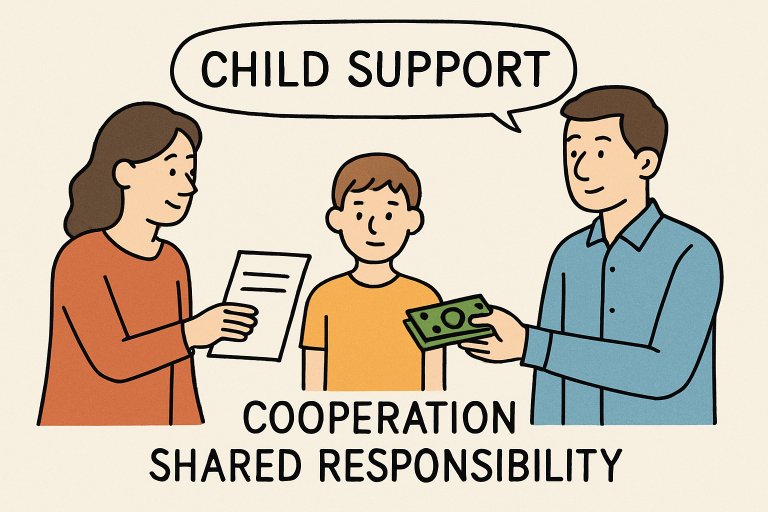The landscape of child support is undergoing significant changes, reflecting a deeper understanding of what today’s families experience. Courts and lawmakers are evolving their approaches to address the realities of diverse income sources, varied parenting arrangements, and the holistic needs of children. Anyone navigating parental responsibilities or facing legal questions about support will benefit from understanding these trends, and consulting a child support lawyer can provide important guidance and representation when addressing your personal situation. The legal system is adapting as more families rely on nontraditional work and experience complex living situations. New policies aim to ensure that support is fair and that every child’s unique circumstances are genuinely considered.
Expanded Definition of Income
One of the most notable shifts involves broadening what counts as income for support calculations. Whereas older models typically focused on steady job salaries, the modern approach encompasses earnings from freelance jobs, gig work, self-employment, and even unconventional sources such as rental properties, royalties, and cryptocurrency holdings. Including these sources helps ensure both parents contribute fairly and that children receive consistent support regardless of how their parents earn. According to the New York Times, several states now run pilot programs designed to help trace and verify nontraditional earnings, creating a more level playing field for families shaped by today’s dynamic economy.
Adjustments for Shared Parenting Time
Recognizing the importance of shared parenting, courts now more precisely account for the actual division of parenting time when calculating support. Policies in states like Florida stress the impact of even minor shifts in custody schedules on support amounts. The goal is to encourage active co-parenting while ensuring financial obligations genuinely reflect the time and resources each parent commits. These reforms are particularly impactful when parents live in proximity and share roles equally, leading to child support arrangements that adapt as parenting time changes.
Inclusion of Medical and Childcare Expenses
Modern child support agreements are expanding to include provisions for expenses beyond basic housing, food, and clothing. Courts frequently require parents to share the costs of health insurance premiums, medical treatments, day care, and extracurricular activities. By acknowledging these essential yet sometimes unpredictable costs, the legal system better safeguards the full spectrum of a child’s well-being. Well-designed agreements help cover gaps in health insurance, out-of-pocket medication costs, and the range of care necessary for a child’s healthy development.
Streamlined Modification Processes
Recognizing that life is unpredictable, many jurisdictions have made it easier for parents to seek modifications to their child support orders. Factors that can trigger adjustments include sudden income shifts, job loss, significant changes in parenting arrangements, or the emergence of major health expenses. Technological improvements, like online forms and virtual court appearances, have simplified and accelerated the process, making it more accessible for parents who need timely relief or adjustment. This ongoing modernization supports the premise that support orders should always accurately reflect the current realities of parents and children.
Enhanced Enforcement Mechanisms
Ensuring that court-mandated support is paid on time has become a priority in states nationwide. Innovations in enforcement now range from automated payment tracking to garnishment of wages, interception of tax refunds, and even suspension of driver’s or professional licenses for major non-compliance. These tools have been implemented not to punish but to emphasize the importance of consistent support and deter chronic nonpayment. Parents facing enforcement actions also have clearer ways to contest or resolve disputes, promoting a fair process for all involved.
 Consideration of High-Income Families
Consideration of High-Income Families
Child support models have evolved for families with substantial income to reflect higher living standards and children’s accustomed lifestyles. Courts now calibrate support to align with expectations for private schooling, travel, charitable giving, and extracurricular activities familiar to the child. This ensures that children of high earners do not see a significant drop in living quality after separation while maintaining fairness for both parents regarding future financial obligations and contributions.
Introduction of Prenatal Support
Some states are pioneering laws that allow for child support to begin before a child is born. Prenatal support typically covers maternity healthcare, pregnancy-related costs, and sometimes expenses tied to the parent’s lost income during pregnancy. These measures represent a shift toward valuing the financial responsibilities associated with parenting even before birth and supporting the health and well-being of both mother and child during a critical period.
Final Thoughts
The modern realities of family life are shaping the next generation of child support agreements. With broader definitions of income, new attention to co-parenting, coverage for more expenses, easier modification, enhanced enforcement, high-income considerations, and prenatal support, today’s reforms aim to create comprehensive, adaptable systems. These efforts help ensure support arrangements are fair, current, and focused on what matters most: the well-being and success of every child.







